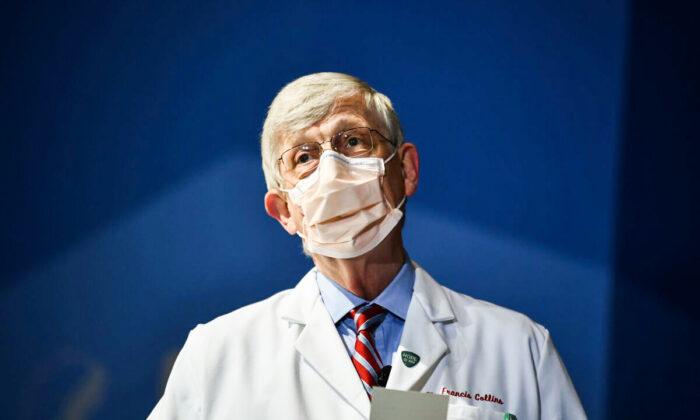The National Institutes of Health (NIH) altered a key portion of its website last week around the time it disclosed to Congress that experiments it funded in China met the definition of gain-of-function.
There’s no definition of gain-of-function inside the framework. The only mention of it refers people to a list of examples of activities that would and would not be considered to involve ePPPs. That list was last available in May 2017, according to an Epoch Times review.
An NIH spokeswoman confirmed that the webpage, a “backgrounder” on the framework, was altered last week, around the same time the disclosures were made.
The information concerning gain-of-function “was being misused/used incorrectly (and still is) and creating confusion (and still is),” the spokeswoman told The Epoch Times in an email.
“The backgrounder was updated to provide clarity on the scope of the framework,” she said.
The Epoch Times has submitted a Freedom of Information Act request for all communications and other internal NIH documents concerning the alteration.
The new disclosures, some experts say, showed the funding did go toward GOF research, which runs counter to what Collins and Fauci told members of Congress in Washington during public hearings earlier this year.
While Collins and Fauci are standing by their statements, Fauci shifted his defense on Oct. 24, saying the experiments didn’t meet the definition of “gain-of-function research of concern”—after earlier claiming they were not gain-of-function at all.
Rep. Thomas Massie (R-Ky.), a strong critic of the NIH, said on Twitter that the webpage change is concerning.
Twitter user Jeremy Redfern first identified the NIH’s update.
Rep. Marjorie Taylor Greene (R-Ga.) also took notice of the update, writing, “What does the NIH have to hide?”
The NIH and other health agencies have altered other pages during the COVID-19 pandemic.
A spokesperson for the agency previously told The Epoch Times that the earlier definition “could be interpreted to mean that vaccines are 100 percent effective, which has never been the case for any vaccine, so the current definition is more transparent.”






